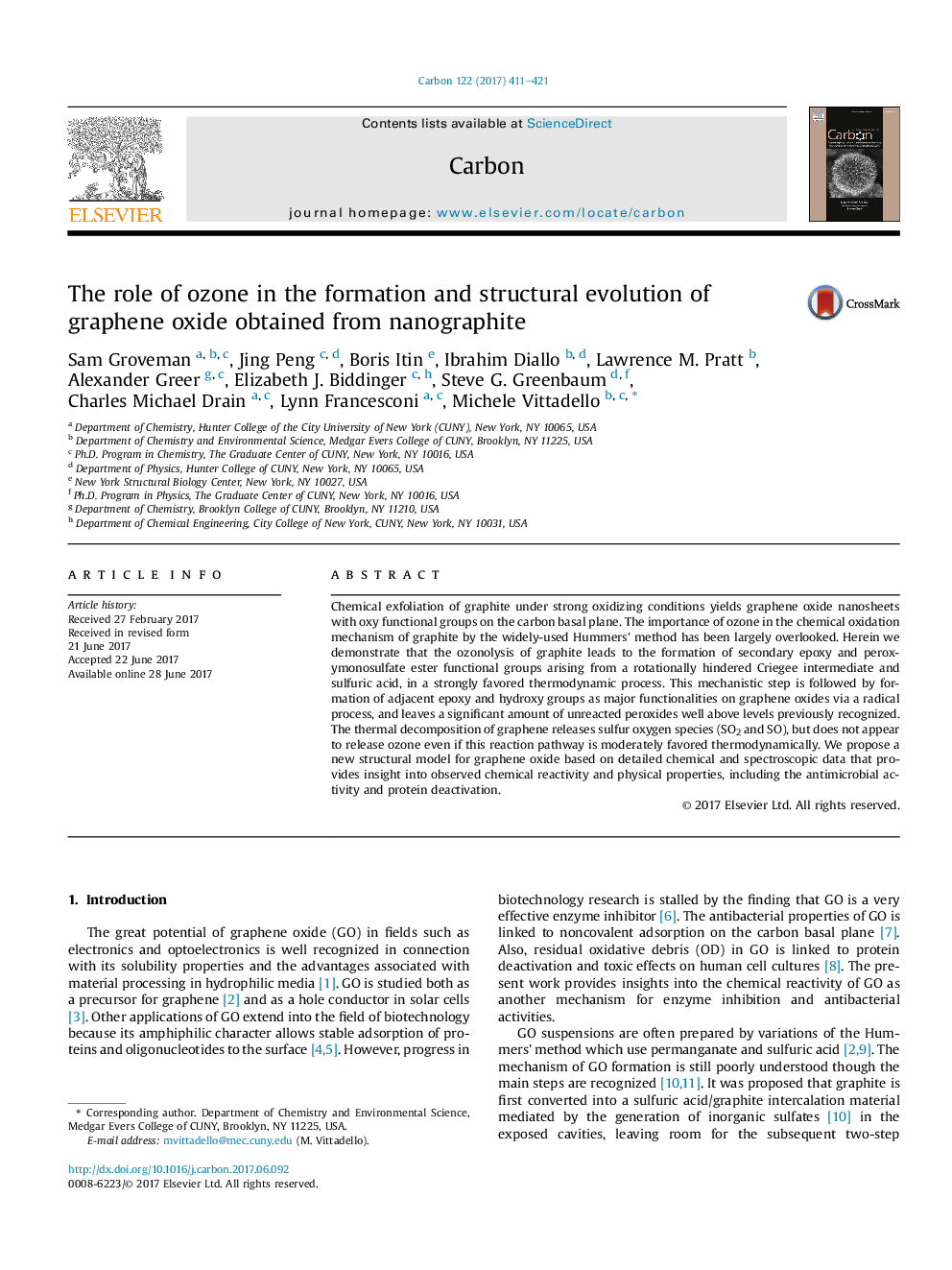| Article ID | Journal | Published Year | Pages | File Type |
|---|---|---|---|---|
| 5431951 | Carbon | 2017 | 11 Pages |
Chemical exfoliation of graphite under strong oxidizing conditions yields graphene oxide nanosheets with oxy functional groups on the carbon basal plane. The importance of ozone in the chemical oxidation mechanism of graphite by the widely-used Hummers' method has been largely overlooked. Herein we demonstrate that the ozonolysis of graphite leads to the formation of secondary epoxy and peroxymonosulfate ester functional groups arising from a rotationally hindered Criegee intermediate and sulfuric acid, in a strongly favored thermodynamic process. This mechanistic step is followed by formation of adjacent epoxy and hydroxy groups as major functionalities on graphene oxides via a radical process, and leaves a significant amount of unreacted peroxides well above levels previously recognized. The thermal decomposition of graphene releases sulfur oxygen species (SO2 and SO), but does not appear to release ozone even if this reaction pathway is moderately favored thermodynamically. We propose a new structural model for graphene oxide based on detailed chemical and spectroscopic data that provides insight into observed chemical reactivity and physical properties, including the antimicrobial activity and protein deactivation.
Graphical abstractDownload high-res image (153KB)Download full-size image
